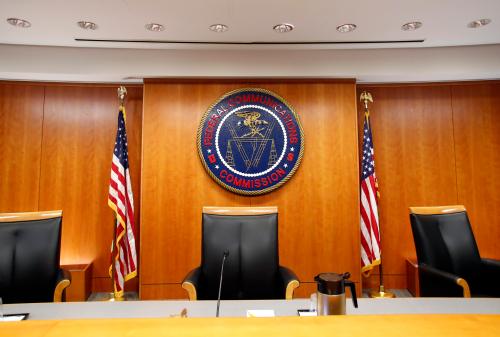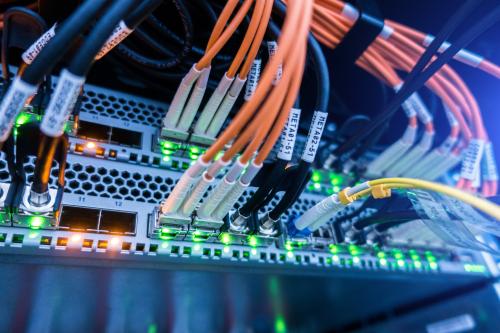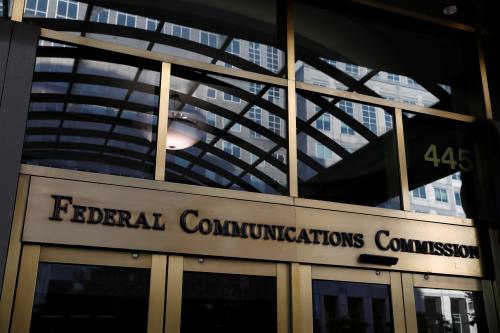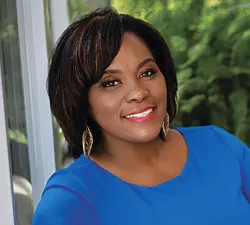Inauguration Day promises sweeping change across the federal government—and the Federal Communications Commission (FCC) is no exception. Ajit Pai, the FCC’s current Republican chairman appointed by President Trump, will depart the agency on January 20, as is customary with past agency leaders. With his departure may come some sweeping changes at the Commission. The FCC’s current policy and enforcement priorities may shift, especially with the Republicans slated to lose their majority with the departures of Pai and Commissioner Mike O’Rielly (whose replacement Nathan Simington from the Commerce Department was approved by the Senate Commerce Committee).
Under a Biden-Harris administration, Democrats will have a 3-2 majority and be in a position to possibly reverse highly-debated Trump-era rulemakings on net neutrality, Section 230, and reductions to the Lifeline program, a staple of the FCC’s Universal Service Fund (USF) program. A Biden-Harris FCC could also expand Pai’s work on the digital divide, balancing his focus on broadband deployment with adoption and use, which some have argued are the primary reasons for slowed down subscription rates among non-internet adopters. 5G and the need for more accurate data could take priority for the Biden-Harris FCC, although this is all dependent upon who gets chosen as the new chair. Finally, Pai’s track record on process reforms that resulted in more votes on rulemakings and increased transparency at meetings could be continued by incoming leadership.
Net Neutrality
One of the top policy issues on the menu for the newly staffed Commission will be the repeal of the 2018 Restoring Internet Freedom Order, especially following the D.C. Circuit Court’s decision last year to defer to the agency’s interpretation of the 1934 Communications Act. The 2018 Order, which reclassified broadband providers as Title I services and repealed the Obama-era net neutrality rules, faced Democratic congressional opposition and has been protested by certain states, including California, who subsequently introduced or passed their own versions of open internet rules.
The new FCC could pass a declaratory ruling to reverse the 2018 Order and reinstate the 2015 Open Internet Order that would again reclassify broadband providers from Title I to Title II services. Given the heightened dependency on the internet during the pandemic, the Biden-Harris FCC could go further and explicitly prohibit data caps, zero-rating, and interconnection fees within a net neutrality rulemaking. The choice of either one of the Democratic incumbents as the next agency chair would accelerate these actions as both Commissioners Rosenworcel and Starks opposed the 2018 Order, and Rosenworcel stated that the 2020 Order on Remand was a “missed opportunity” to reverse the agency’s earlier decision.
While any further action likely would be contested and subject to further litigation, the composition of the Senate following the Georgia run-off elections could call for legislation, which would either permanently classify broadband providers as Title II services, impose net neutrality requirements under Section 706, or update the 1934 Communications Act more broadly. While a legislative solution could establish more consistent and predictable open internet rules for broadband providers—and potentially reduce legal challenges—there is also a possibility that party control of Congress will be divided next year, resulting in a slowdown of any legislative activities. Congress will also prioritize issues like COVID-19 relief or confirmations at the beginning of next year, making this issue one that may be led at the Commission.
Digital Divide
Inequitable access to broadband will also be of high priority to the Biden-Harris FCC. With more than 16 million K-12 students without access to home broadband, an internet-enabled device, or both, the next FCC may focus on adoption and utilization, shifting the focus from defunding parts of the USF to increasing its resources. In fact, there may be a more granular focus on certain line items, including E-Rate that brings high-speed broadband access to schools and libraries, as well as the Lifeline program that has provided access to communications services for eligible low-income populations since 1986. Each program’s statutes will be debated by both the Commission and Congress to ensure its reaching the people in most need of home broadband.
Generally, both Democrats and Republicans have supported using the USF to improve telecommunications access for rural or low-income households over the last four years. The Trump FCC used it to establish a new Rural Digital Opportunity Fund (RDOF) to allocate over $20 billion to deploy broadband infrastructure in rural areas. But in the process of galvanizing resources before and during COVID-19, the digital divide has become more pronounced and some aspects of the nation’s provision of universal service may be outdated, or sufficient enough to address growing digital access disparities. A Biden-Harris FCC may find themselves modernizing the USF, moving toward more accurate data collection from broadband providers, and futureproofing the Lifeline and E-rate programs to either close the “homework gap” or reduce the costs of broadband services. On this latter point, a Biden-Harris FCC will override Pai’s recent attempts to gut and eventually eliminate the Lifeline program, as well as mute Republican concerns around the “waste, fraud, and abuse” associated with the program.
Section 230
Section 230 of the Communications Decency Act has faced criticism from both Republicans and Democrats in Congress, although for different reasons. Democrats argue that it provides a vehicle for social media platforms to preserve content that is violent, misleading, or could interfere with democratic elections, while Republicans allege that it empowers platforms to censor conservative voices. In May 2020, motivated by allegations of anti-conservative censorship, President Trump issued an executive order that directed the National Telecommunications and Information Administration to petition the FCC to “expeditiously” initiate a rulemaking proceeding to clarify (a) when a platform may claim immunity under Section 230 for removing content, and (b) when a platform’s decision to remove content constitutes a “good faith” action under the statute. In October, Chairman Pai announced that he would proceed with the rulemaking process under Trump’s executive order. Earlier this year, outgoing Commissioner O’Rielly had his renomination reversed by the Senate after disavowing the jurisdictional reach of the agency on this issue.
Similarly, Commissioners Rosenworcel and Starks both objected to the executive order, declaring that the FCC should not be responsible for changing the current law or preventing free speech on the internet. Indeed, it is probable that a Biden-Harris FCC will dismiss any further agency action on Section 230 enforcement—leaving this issue to be resolved by Congress.
5G
Nationwide 5G deployment is a bipartisan issue, whose importance has elevated during the pandemic. During Chairman Pai’s tenure, the FCC held five spectrum auctions to accelerate 5G access and, as mentioned, recently developed the RDOF. In the last year, the FCC has also addressed network cybersecurity concerns by stripping and prohibiting the use of telecommunications equipment by Chinese telecom providers.
While the Biden-Harris FCC will likely continue to accelerate spectrum availability for 5G commercial use, they will also inherit concerns over global supply chains, and new issues relating to the Department of Defense’s desire to create their own secure 5G network that would be free from network interference.
Another area in 5G whose direction is somewhat undetermined by a Biden-Harris FCC is the involvement of localities in network deployment. Under Chairman Pai, the Broadband Deployment Advisory Committee (BDAC) convened diverse stakeholders to examine and remedy the hard issues of right-of-way, pole attachments, and network costs. Still, the Trump FCC faced criticism for prioritizing the needs of large carriers in cities and targeting investments to predominantly white rural areas that left unserved poorer populations of color. The next FCC might look to balance the needs of localities by curbing some of the current FCC’s regulatory permissions and integrating the reasonable needs of localities into 5G build out plans. The next FCC may also address the economic burdens of local government officials resulting from Pai’s 5G rules, an area that both Rosenworcel and Starks have commented on.
Mergers and acquisitions
At this point, we do not have a set opinion on how the next FCC will approach mergers, except that the agency will be under a microscope by the Democratic party to be a little less forgiving of companies than Pai’s team. The Biden-Harris FCC may have stronger requirements for community benefit agreements and stated external diversity goals. During his tenure, Chairman Pai re-chartered the dormant Advisory Committee on Digital Empowerment and Diversity as a non-rulemaking entity and the group (of which Nicol Turner Lee is a member) has issued strong recommendations around the consideration of diversity in adoption, workforce development, and suppliers as more resources are invested in wireless and wireline assets. While the Advisory Committee recommendations have not been directly applied to M&A reviews, it is likely that a Biden-Harris FCC will factor these points into any forthcoming or pending business transactions. Company acquisitions may also slow down in the next four years based on the reinstatement of net neutrality rules, which may impact the liquidity of broadband service providers.
A central role for the FCC
In the next few months, the FCC will be at the center of significant debates on broadband access, Section 230, 5G, net neutrality, and other areas, including broadcast media ownership, satellite, and the expanded use of communications services for the public good. On the latter point, the current FCC designated 988 for the National Suicide Prevention Lifeline and we should expect more goodwill from the Commission related to COVID-19, perhaps in the form of a vaccination information hotline. In part, the process reforms instituted early into Pai’s term made for a very busy four years by bringing more items to vote and establishing an Office of Economics and Analytics to leverage data in decision-making, among other things. Both Rosenworcel and Starks have publicly called on Pai to halt any politically charged or controversial rulemakings until Inauguration Day. But the next FCC will move just as fast to overturn current policy directives. New FCC leadership also has an opportunity to establish new norms that modernize America’s networks, programs, and investments to address the growing reliance on more advanced communications services.
The Brookings Institution is committed to quality, independence, and impact.
We are supported by a diverse array of funders. In line with our values and policies, each Brookings publication represents the sole views of its author(s).












Commentary
What to expect from a Biden FCC on Section 230, net neutrality, and 5G
December 3, 2020